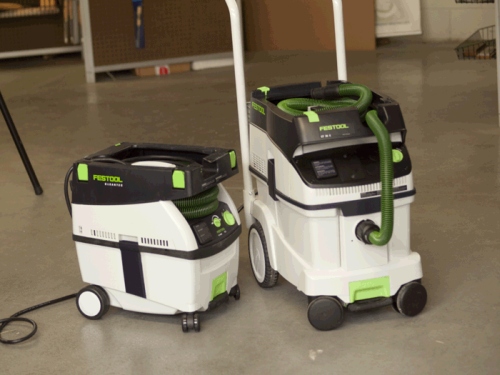|
|
02/18/2015 |
 This weekend I will be at the Somerset Woodworking Show in New Jersey along with our crew and a fair range of Gramercy Tools, Flexcut carving tools, DMT, Blaklader workwear, and of course Festool. We will be demoing the new Festool Conturo, an exciting new edge-bander from Festool that brings to the smaller shop the power of a professional edge-bander. The Conturo does curved as well as straight edges, perfectly fitting into the requirements of modern furniture design. We will also have (we hope) the first BT&C Festool accessory product - Spots. This weekend I will be at the Somerset Woodworking Show in New Jersey along with our crew and a fair range of Gramercy Tools, Flexcut carving tools, DMT, Blaklader workwear, and of course Festool. We will be demoing the new Festool Conturo, an exciting new edge-bander from Festool that brings to the smaller shop the power of a professional edge-bander. The Conturo does curved as well as straight edges, perfectly fitting into the requirements of modern furniture design. We will also have (we hope) the first BT&C Festool accessory product - Spots.
In addition to us, Lee Valley will be there, along with many other top notch vendors. 360woodworking is giving free seminars all three days and I am told Frank Klausz will be stopping in their booth too. Very valuable paid seminars will be taught by Marc Adams and others.
This is our busy season and I spend a lot of time with customer, old and new, trying to understand their needs, concerns, and desires. What's really interesting to me about the modern professional woodworking market in NYC is how standards have changed. It's true that in 1900 a bandsaw would have had naked blade spinning and we know from contemporary documentation of the time that lots of people thought the guards unnecessary. Now they all have blade guards. When I was younger and we argued about guards on table saws, guards on bandsaws were taken as a given. I think the reason was that I grew up in an age when a bandsaw guard was pretty obvious. It just didn't seem weird to us. It was how you built a bandsaw. Tables saws on the other hand were a different matter.
Table saw safety perceptions are changing. Many people who are used to a bare blades and really poorly designed table saw guards consider the entire debate is about the nanny state and not being careful. People who have seen well designed guards and what happens when you don't have a guard, are probably as a group, younger. But we no longer find it odd, or non-professional, for someone to have a table saw tricked out with guards, or a saw stop. And in fact it's increasingly the standard.
The same this is happening to vacuums. When I first started selling tools dust collection was an afterthought and it was generally thought that there was nothing wrong with a jobsite covered in a haze of dust. This has drastically changed. Leaving a film of dust all over a home isn't nearly as acceptable as it was, and cabinetmakers and finishers, especially younger ones, are more and more aware of, and take preventive measurements against, dust and noise. This is all good.
It's really interesting how the idea of having a HEPA rated vacuum at a job site, not leaving a mess at the end of the day, not having to breath dust, have all become normal for contractors, not a "nice to have". I am of course appalled when I see people use demolition hammers without ear protection, sand without dust collection or masks, and abrasive cutoff wheels without goggles. But I can also say in the past ten years I see this less and less, and usually the demonstration is accompanied by a lack of skill, one step above day labor (N.B. please don't write me and tell me proudly that you never wear goggles or ear protection - I've seen or heard of too many accidents to think that's smart to do, and too many craftsman I know have permanent hearing loss from not wearing ear protection when they were younger.) Younger craftspeople are more aware than ever of the need to protect eyes, lungs, and hearing for the long-term. I think it's great.
What has happened in NYC is that as more and more crafts-people work with great dust collection, customers have started demanding a cleaner job site, so other contractors are forced to upgrade, and in workshops (especially with all those bearded Brooklynites who can't use dust masks effectively) people are demanding cleaner environments, which is not only safer, but also makes finishing easier.
See you in this weekend in Somerset. Along with the crew I'll be there Friday and Saturday. The show runs through Sunday.
|
Join the conversation |
|
 Joel's Blog
Joel's Blog Built-It Blog
Built-It Blog Video Roundup
Video Roundup Classes & Events
Classes & Events Work Magazine
Work Magazine


 This weekend I will be at the Somerset Woodworking Show in New Jersey along with our crew and a fair range of
This weekend I will be at the Somerset Woodworking Show in New Jersey along with our crew and a fair range of